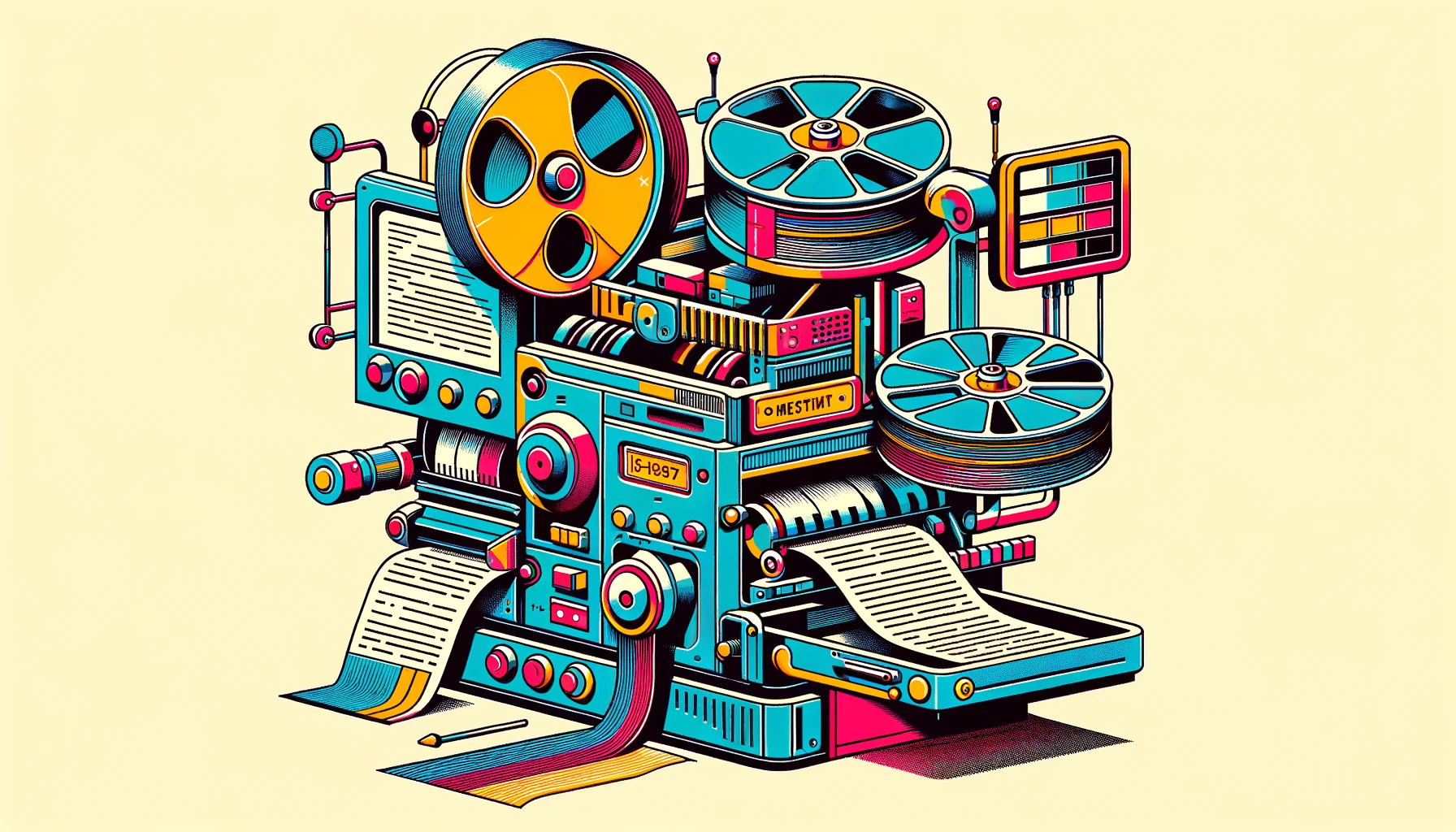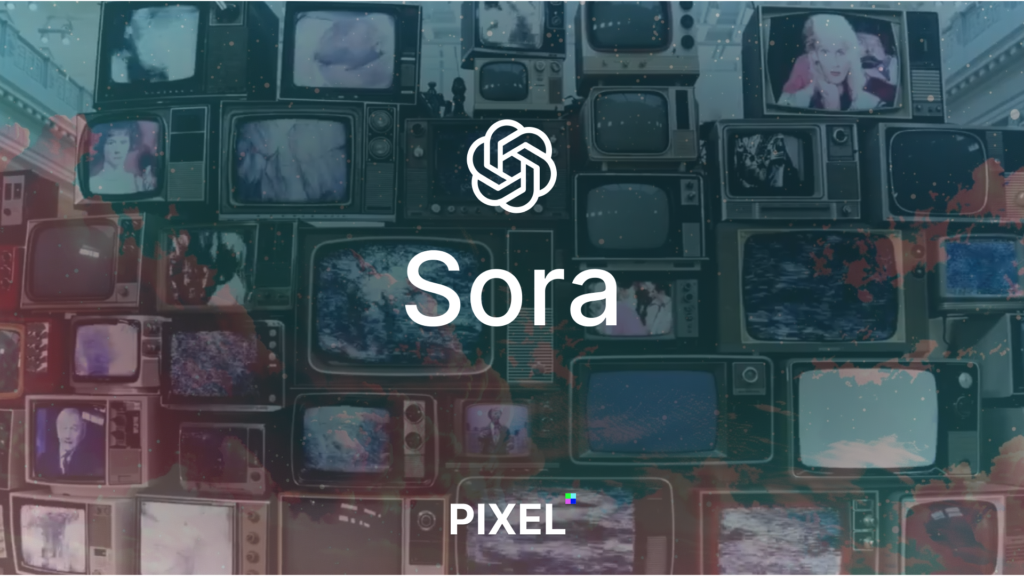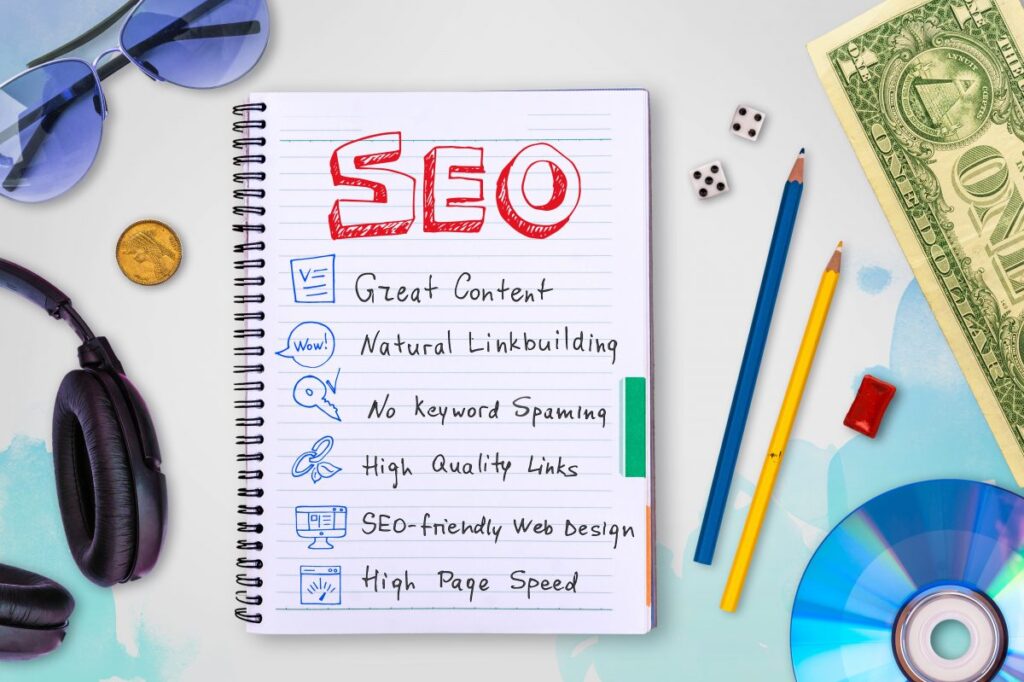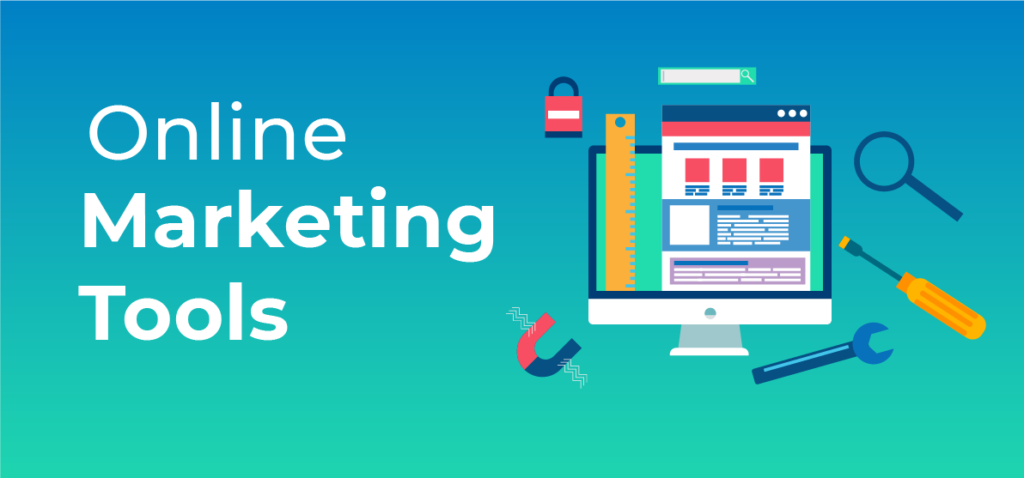The discourse surrounding AI’s influence on UX/UI design has surged significantly. The intersection of AI and UX/UI has the potential for enhanced personalization, improved user insights, leaps in voice interfaces, adaptive designs, and optimized accessibility features.
Before we go on to explain the potential of AI in UX/UI design, let’s decode the design terms.
UX/UI design, which stands for User Experience (UX) and User Interface (UI) design, encompasses creating digital products such as websites or mobile apps to provide users with a seamless and enjoyable experience. UX design focuses on understanding user needs and behaviors to optimize the functionality and usability of the product, whereas UI design has more to do with visual aspects and aesthetics.
UX/UI design is to your website what interior decor is to your home. It magnifies your SEO efforts, brings in conversions, builds your brand, improves your brand reputation, and, most importantly, increases user engagement.
Modern web design requires you to take UX and UI up a notch with AI. It’s no longer enough to have a visually appealing website; it needs to be smart and intuitive, anticipating user needs and providing personalized experiences.
Below, we explain the use of AI in UX/UI design for marketing. We also discuss in which particular market verticals AI can play its role. Plus, we mentioned a few helpful tools and shed light on future trends in the AI UX/UI design space.
Overview of AI in UX/UI Design
The use of AI for marketing isn’t really a novel concept. For the past few years, marketers have increasingly adopted AI for everything from ideation to content distribution. Automation has also parlayed its way into marketing operations, often used alongside AI.
According to Hubspot’s AI marketing report, 44% of marketers use visual AI apps in marketing. For instance, they may use AI image generators to create visuals for their social media content. In web design, AI capabilities are harnessed to improve UX/UI design elements like navigation and personalization.
Type of AI marketing apps marketers are using
For instance, Kive.ai is among the top tools used by designers to create AI-powered mood boards and visual libraries.
Kive.ai is one of the top tools designers use to create visual libraries and AI-powered mood boards. One of the many ways in which Kive streamlines marketing is by eliminating emails.
The whole UX/UI design team can collaborate through shared boards and even give their feedback on the same platform.
Features of Kive.ai
The use of AI in UX/UI design for marketing isn’t limited to design generation. It also expands into the personalization and analytics helm. For example, Predict AI by Neurons is an AI tool that gathers eye-tracking data to understand how users interact with a website. With this tool, marketers can see how customers view their ads, websites, and other marketing materials.
Impact of Neurons on brand engagement, conversions, and CTR
Similarly, another tool in this regard is Vizit. The tool provides data on the likelihood of a design or image to prompt your customers to make a purchase. So, you can use a tool to determine if a CTA button will get people to take action or not.
Vizit’s effectiveness in improving visual performance
These are just some of the many diverse uses of AI in design. The versatility and scalability of this technology mean that marketers can use it individually or with the existing conventional tools in their design toolbox.
How to Use AI in UX/UI Design for Marketing?
The way a marketer uses AI in their UX/UI design depends on a number of factors, such as the size of the company, the extent of AI adoption, current campaign objectives, and budget.
For the scope of this guide, we share a few standard use cases of AI in UX/UI design.
Personalization
It goes without saying that personalization is key these days. Customers don’t just want to be ”numbers” or ”leads.” Instead, they want special treatment.
If you look at how customers want the content catered to them to be personalized, most respondents say they want brand communication to be based on their past purchases. In the second place, they want the content to be personalized based on their interests. As your brand grows, it’s hard for you to keep track of every customer individually.
Level of personalization customers want
AI helps. It’s sort of like an automated virtual assistant that keeps track of every customer’s past purchases and interests in your brand. It stores this data in a way that’s easy to access and analyze. Next, it even helps you create personalized content.
That’s why 9 in 10 companies are already using AI-driven personalization in one way or another in their organizations. The major aim of this tech’s use is to drive growth. Other objectives could be higher customer satisfaction and a boost in ROI.
Use of AI-driven personalization by organizations
AI-Backed A/B Testing
A/B testing is undeniably one of the best ways to gauge how well the audience will perceive a certain feature or attribute. Suppose you’ve created a landing page. Then, you create another version of it.
Now, you want to see which of the two versions performs better. A/B testing, also known as split testing, can help you out. Basically, you test both landing pages to see how they impact the KPIs you’ve chosen for the experiment.
But with the ever-increasing number of UX/UI design segments, creating just two versions of a feature may not be enough. Also, it takes time to test multiple versions of multiple features. AI can cut that time by automating the A/B testing process.
How? You can simply use a relevant AI tool, such as ABtesting.ai, to determine which of the two versions will perform better.
ABtesting.ai
The AI tool makes this decision based on past customer data and interactions with your brand.
User Journey Analysis
At what point in their journey are you losing potential customers? Or getting one? Maybe it’s when they saw your ad on Google. Was it when they got an email from you?
AI can help map this out, too. Instead of spending hours trying to follow each user’s footprint through your website, AI can analyze vast amounts of data in seconds. That’s a ton of saved time and headache. You can then leverage this data to decide when, where, and how to target your audience, whether it’s with an ad, a promotion, a useful piece of content, or just a nudge in the right direction (e.g., a CTA to sign up for your service).
AI can also help you identify any gaps in the user journey. Maybe there is a particular step where most of your potential customers drop off. For instance, if the majority of users exit your website after adding a product to their cart, it could indicate issues with the checkout process or pricing. AI does not only pinpoint these issues but also offers recommendations and alternative design options.
Dynamic Content Generation
Dynamic content means that the content displayed on your website or email is tailored to each individual user. It’s the height of personalization.
Personalization no longer simply means using a subscriber’s name in the email opening. It has gone beyond that. Many marketing experts now recommend using dynamic content for hyper-relevance and hyperpersonalization.
A tweet about using dynamic content for hyperpersonalization
Besides adaptive layouts, dynamic content also encompasses targeting messaging. For example, if a user has previously purchased a certain product from your website, you can show them personalized recommendations for similar products. On the other hand, a new user might see content introducing your company and offerings.
Creating multiple versions of the same content is, understandably, a daunting task. Fortunately, AI speeds it up. Not only does it help you create dynamic content, but it also optimizes it based on the user segment. That’s a lot less work for you to do.
AI-Driven VUI (Voice User Interface)
How many times a day do you ask Alexa or Siri for help? Or maybe you’re more of a Google Assistant person. Whatever your preference, voice user interfaces (VUI) are becoming more and more common in our daily lives. Similarly, voice searches are increasing on the web, too.
According to Google, 27% of the global population uses voice search on their mobile phones to access the web. That means user interface design isn’t limited to visuals anymore; it’s also voice-oriented.
Your websites and apps must be equipped with voice capabilities to not only understand what the customers want but also show them the best possible results. Again, AI plays a crucial role in VUI by recognizing speech patterns and responding with the most relevant information.
Case Studies of AI-Driven Design
On paper, AI is a revolutionary technology. But its actual impact is only as big as the method of its usage. Here are some companies who have mastered the art of AI use in UX/UI design.
Considering the company’s commitment to AI adoption, we’re not surprised to see Google topping the list.
A tweet about Google’s use of AI in UX design
Google’s Responsible AI User Experience/Responsible AI UX team comprises researchers, engineers, designers, and strategists who work together to ensure effective product development through a merger of AI and UX/UI design.
The ethos of this merger is simple: to bridge the communication gap. Here’s how Google does it:
- The company gets actionable user insight.
- GenAI model experts analyze this data.
- They get an actionable AI model insight.
- The user and society experts use this insight to make appropriate changes.
How Google’s UX/UI AI team works
Let’s explain this further with an example. Google’s own research and some external studies found that current speech recognition technology, on average, is less able to understand Black speakers than White speakers. That’s an actionable user insight.
In the next step, Google’s UX/UI team partnered with Howard University scientists to build an African-American English dataset that would improve the search engine’s speech technology products by increasing their accessibility. The initiative, Project Elevate Black Voices, will be funded and supported by Google.
Dribble
Dribble is a one-stop for creatives to find new opportunities and expand their skills. Previously, the website’s team was custom-building landing pages. It took a lot of time and made processes inefficient.
Then, the company shifted to Framer, an AI tool that makes marketing pages. Framer allowed Dribble to make conversion-oriented marketing pages. The UX design of these pages prompted the visitors to take Dribble’s desired actions, such as sign-ups and event registrations.
Kering
Kering, the parent company of well-known fashion brands such as Gucci, Saint Laurent, and Balenciaga, is a French luxury goods conglomerate. The brand recently introduced its KNXT platform, which uses artificial intelligence (AI) to optimize sales. ”Madeline” is a ChatGPT-based ”personal shopper” on this platform that lets people access Kering’s subsidiaries through instant messaging and product recommendations.
Madeline, AI-based personal shopping assistant
UX/UI Tools for Marketers
When using AI in UX/UI design for marketing, having the right tools can make all the difference. Here are some incredible options to try.
Tldraw
The idea behind Tldraw is super cool. It’s like MS Paint, except that whatever you draw is automatically rendered into code. That makes it perfect for creating mockups and wireframes quickly.
Tldraw in action
Framer
We already talked about Framer earlier. It’s your canvas on the Internet. You simply design, code and share. It’s perfect for creating dynamic prototypes and highly interactive designs. Some AI features of the platform include AI style, AI translation, advanced localization, and Text Rewrite.
Ulizard
Ulizard hails itself as the first AI-based UX/UI design tool. The tool is super-interactive, letting you generate mockups using text prompts. All you have to do is drag-and-drop elements to create your design. AI technology does the rest.
Visualeyes
Visualeyes, recently acquired by Neurons, does three things for UI/UX designers. One, it creates an Attention Map, which works as a replacement for Eye Tracking studies to show you where people look first when they land on your website.
A tweet recommending UX/UI AI tools
Two, it gives a Clarity Score that tells you how clear your design is. And three, it tells you the audience’s area of interest. Together, these findings allow designers to ace UX/UI design.
Fronty
Fronty is an image to HTML converter that utilizes AI technology to generate clean HTML and CSS code from any image. You need no coding experience to use this tool. Just upload an image and let AI do its magic. The tool also has an online website editor that you can use to edit UI design.
Khroma
Unlike the other tools on this list, Khroma is not a design tool. It’s a color generator powered by AI. Basically, the tool uses AI to determine the right colors for your marketing material and website. It generates color palettes that you can use for your design projects.
Future Trends in AI and Design
As we delve deeper into the use of AI in UX/UI design for marketing, it’s imperative to remain familiar with the latest trends and predictions surrounding this powerful technology. Here are some of them.
Integration of AR/VR in AI UX/UI Design
Augmented Reality (AR) and Virtual Reality (VR) are steadily gaining ground in the field of AI UX/UI design. Statista expects these digital twins (AR and VR) to bring in a lot of revenue by 2028, especially in the VR hardware and AR advertising markets.
Revenue generated by AI and VR
As we move forward, there will be more integration of AR/VR into AI UX/UI design to create realistic and immersive experiences for users. For example, AI-based user analytics and predictive modeling will form the basis for AR-based shopping experiences. Similarly, AI may ace the UI design, while AR supplements it through options like virtual try-ons and customizations. Gucci Beauty’s virtual try-on is a good example here.
Focus on Design Sustainability
Design sustainability is poised to be a significant focus area in the future of AI UX/UI design. Designers globally are already acknowledging the importance of sustainable design in creating a better world for all stakeholders. AI can assist in this area by recommending eco-friendly designs and optimizing the design process to reduce waste.
AI-powered Conversational Interfaces
Conversational interfaces are meant to mimic human-like interactions, and AI is the driving force behind their development. Gartner predicts widespread AI adoption in the contact center market. We can expect the same to happen in UX/UI design interfaces. AI-powered chatbots and virtual assistants will become more intelligent, making them an integral part of the user experience. They will ultimately improve user experiences and expand the limit of personalization.
Takeaway
As evident, there’s quite an extensive scope of AI in UX/UI design for marketing. Use cases can differ across organizations, but the primary benefits remain the same: smooth operations, quick decision-making, improved user experiences, and cost-effective design.
The field of AI is highly dynamic. Hundreds of new tools emerge annually. Similarly, trends come and go. So, designers must stay on top of AI trends to produce sustainable designs and keep up with consumer expectations.
Frequently Asked Questions
How does AI impact the UI/UX design process?
Initially, AI helps with ideation. Along the way, it helps with the task of wireframing. AI tools also assist in UX design, facilitate user testing, and provide insights that can enhance designs. They speed up the design process and allow data-backed decision-making.
Are there any ethical concerns with using AI in design?
The ethical concerns with using AI in design are related to transparency, bias, and privacy. AI tools can learn from biased data, resulting in biased designs. Thus, it can result in harm or exclusion of certain groups of users. There’s also a growing concern around AI plagiarism, considering AI’s ability to generate designs depends on existing data and patterns. Transparency also becomes an issue as AI tools can create complex algorithms that are difficult to understand or trace back.
How do AI-driven designs improve customer experience?
Since AI-driven designs are made with the customers’ expectations and past behaviors in mind, they are highly personalized. It leads to improved customer experience as the designs are more intuitive and cater to their preferences. The use of AI in creating dynamic design elements can further enhance the overall user experience by providing real-time, personalized content.





